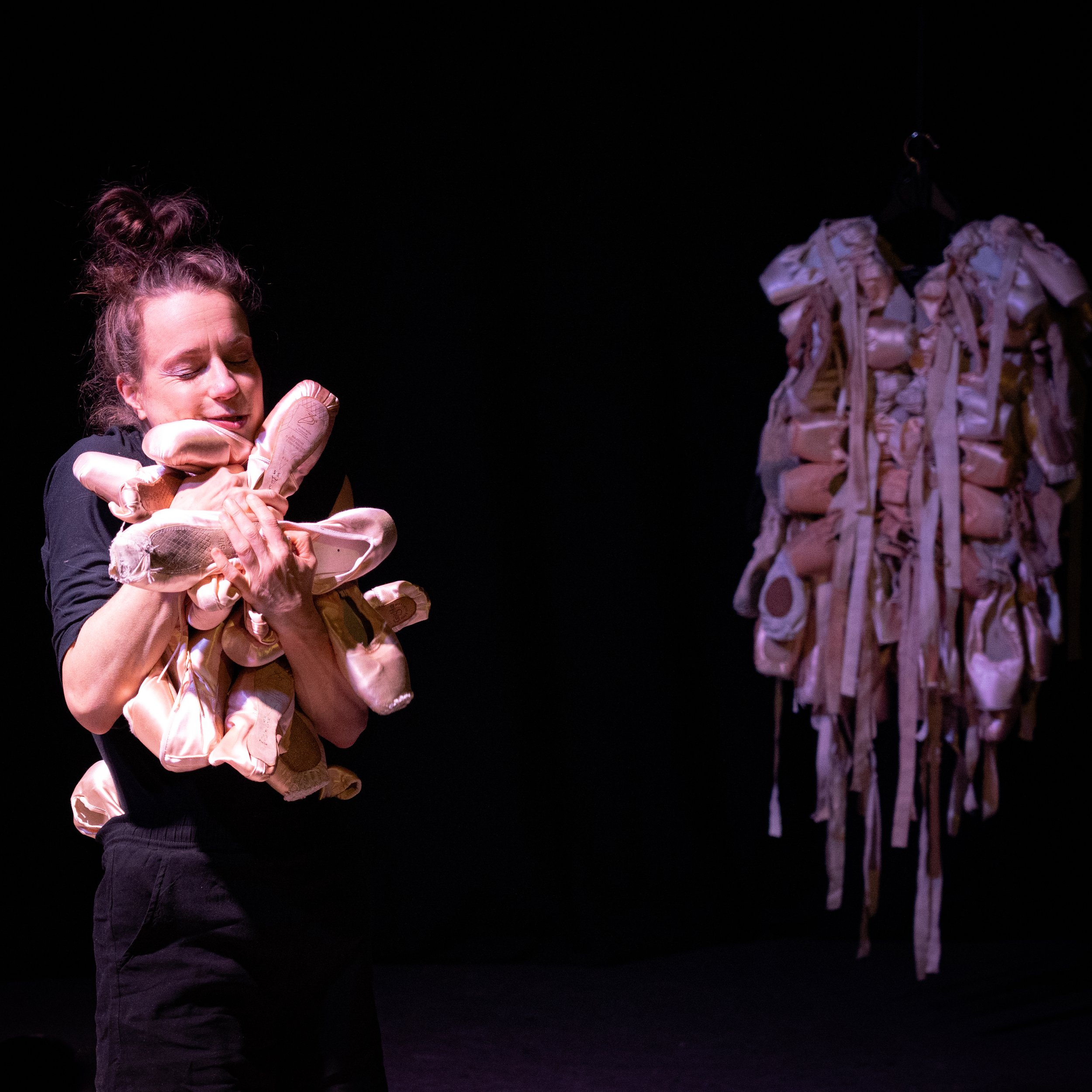DETOX-ME
DETOX-ME is a solo project about the obsessive passion towards dancing,
possible dependency and associated risky behaviours in professional dancers.
DETOX-ME was funded by the Federal Government Commissioner for Culture and the Media in the programme NEUSTART KULTUR, the support programme DIS-TANZEN of Dachverband Tanz Deutschland.
obsessive passion versus harmonious passion
The survey
Dancers could voluntarily participate in a survey about the relationship of professional dancers to dance.
The survey was available online over 11 weeks and advertised on social media and at professional dance centres and schools in Berlin. Fifty-three dancers completed it (48 females, four males, and one diverse). The participants were active mainly in contemporary dance (31), followed by classical ballet (10), modern (5), hip hop (1) and others (6).
The questionnaire included 57 items about demographic information, the Passion Scale (Vallerand et al., 2003), the Exercise Dependence Scale-21 (Hausenblas & Downs, 2002) and a section about the dancers’ perceptions of injuries (Rivera et al., 2012). The two scales were adapted so that “activity” was replaced with “dance/dancing/training”.
All data were evaluated anonymously.
Results showed that no dancer scored high in all 6 items related to obsessive passion.
Furthermore, in line with the exercise dependence scale, 4 participants scored high in more than three dependence criteria. Therefore, they may be identified as dance-dependent.
Regarding the perception of injuries, “Dealing with this state is part of the job”, one participant stated. One of the items suggested was: “Dance culture encourages dancers to "push through pain" and return to full dance activity before injuries are healed”. 31 participants agreed with this statement. Is dance embracing the culture of pain?
References:
Hausenblas, H. A., & Downs, D. S. (2002). Exercise dependence: A systematic review. Psychology of Sport and Exercise, 3(2), 89–123. https://doi.org/10.1016/S1469-0292(00)00015-7
Rivera, D. C., Alexander, J. L., Nehrenz, G. M., & Fields, B. J. (2012). Dancers’ perceptions of injuries. Journal of Music and Dance, 2(1), 9–12. https://doi.org/10.5897/JMD11.006
Vallerand, R. J., Mageau, G. A., Ratelle, C., Léonard, M., Blanchard, C., Koestner, R., Gagné, M., & Marsolais, J. (2003). Les Passions de 1’Âme: On Obsessive and Harmonious Passion. Journal of Personality and Social Psychology, 85(4), 756–767. https://doi.org/10.1037/0022-3514.85.4.756

what research says
It is widely believed that to succeed as a dancer, you must be passionate about dance and performance. But is there only one kind of passion? The Dualistic Model of Passion defines two types: harmonious (HP) and obsessive (OP).
HP is the outcome of an autonomous internalization. The individual can choose freely whether or not to engage in the activity. In contrast, OP is a result of a controlled internalization and embraces aspects such as perfectionism, self-esteem and may lead to eating disorders (EDs).
The data for this study came from 92 professional dancers (69 females and 23 males, aged between 19 and 35) who had diverse dance style backgrounds.
The Passion Scale, the Eating Attitudes Test (EAT-26), the Rosenberg Self-Esteem Scale and the Perfectionism Inventory (PI) were used (in their original form or modified) to analyse and detect HP and OP, disordered eating and EDs, self-worth and perfectionistic tendencies.
References
Padham, Melissa; Aujla, Imogen (2014): The relationship between passion and the psychological well-being of professional dancers. In: Journal of dance medicine & science: official publication of the International Association for Dance Medicine & Science 18 (1), S. 37–44. DOI: 10.12678/1089-313X.18.1.37.

dance and the culture of pain
Are dancers expected to suffer in silence? Are injuries a threat to an obsessively passionate dancer? How can injured dancers deal with the vital need to practice and perform despite their conditions?
A study was carried out among 81 pre-professional dancers recruited from the Department of Dance at the University of Quebec at Montreal.
It was observed that although obsessively passionate dancers were more likely to suffer from chronic injuries, they did not take time off to promote healing and obtain adequate treatment. Individuals with a strong obsessive passion (OP) feel internal pressure and experience a loss of control over their involvement in the activity. Their pride makes them struggle to look for help and preventive measures.
What can protect dancers from undergoing injuries? A positive attitude towards this activity, good sleep quality, social support, planning and solving problems may lessen stress and promote long-term physical integrity.
References
Rip, Blanka; Fortin, Sylvie; Vallerand, Robert (2006): The Relationship between Passion and Injury in Dance Students. In: Journal of dance medicine & science: official publication of the International Association for Dance Medicine & Science 10 (1-2), S. 14–20.

"I'm going to disappoint you now:
I went training again"
- anonymous -








